Have you ever wondered what it’d feel like to strike a chord that echoes into a new dimension? A simple pluck transporting you to a vast auditorium filled with dedicated listeners, or in the heart of an ethereal canyon, your melody resonating through the emptiness? If your imagination is already picturing this scenario, it’s time to delve into the innovative realm of the Yamaha TransAcoustic guitar.
In essence, the TransAcoustic is an acoustic-electric guitar, but limit it to that, and you’re barely scratching the surface. As a seasoned guitar teacher, when I first strummed its strings, the reverberation altered my familiar world. This wasn’t merely an amplified version of an acoustic guitar – this was a revolution. The marriage of acoustic and electric guitar innovations had birthed a harmonious prodigy.
And it’s not magic, just a technological marvel, an intricate dance of acoustic guitar technology leading to a symphony of profound sound experiences. But, precisely how does it garner such sorcery from a regular-looking guitar? The answer lies within the guitar itself, similar to a riddle waiting to be unraveled.
Stirred yet? Strap in as we journey through the fascinating features and technology of Yamaha TransAcoustic guitars. We’ll examine models, onboard effects, sound quality, and finally, guide you in selecting the ideal TransAcoustic for your sonic explorations.
Stand-out Features of Yamaha TransAcoustic Guitars
A Look at the Yamaha FG-TA and LL-TA Models
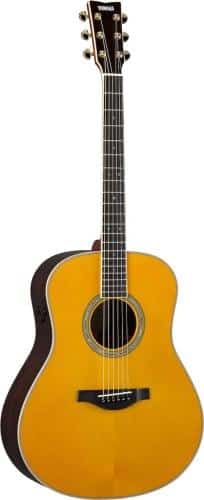
Delving deeper into my personal exploration, the stand-out features truly shine in the Yamaha FG-TA and LL-TA models. Crafted with the guitarist’s experience in mind, their guitar body resonance is exceptional and significantly contributes to the overall sonic texture of the TransAcoustic range. This feature enhances vibrations within the guitar itself, resulting in a rich, enveloping sound that must be heard to be appreciated.
An essential contributing factor to this bodily resonance is the quality of the wood used. Both models sport a beautiful Engelmann Spruce top. Highly valued for its resonant qualities, it produces distinct overtones, aligning magnificently with the guitar’s internal processing to enhance its natural sound. Paired with this, the LL-TA model boasts meticulous craftsmanship with a Nato Neck and a Rosewood Fingerboard, infusing each strum with deep, soul-stirring warmth.
Having dissected numerous guitars in my career, the Yamaha FG-TA and LL-TA stand far above the crowd. From an aesthetic perspective, their distinct wood grains and meticulous finish are admirable. Yet, what sets them apart is the seamless integration of traditional guitar craftsmanship with innovative technology. The result? A genuinely immersive acoustic experience that sends ripples of melodious delight at every strum.
As we transition onto a review of the onboard effects and capabilities of these models, let us not lose sight of the ingenuity witnessed so far. The FG-TA and LL-TA models exemplify Yamaha’s commitment to pushing the envelope of acoustic guitar design. Their unique features and remarkable resonance set a high standard for the rest of the TransAcoustic range to follow.
Onboard Effects and Capabilities

Delving further into the standout features of the Yamaha TransAcoustic guitars, I must bring attention to its onboard effects and capabilities. A stellar contribution in this realm is the amplification-free performance. Essentially, this allows you to play with added effects without needing to plug the guitar into an amplifier.
How does it achieve this? Through a device known as a piezo pickup housed within the guitar itself. This picks up the vibrations of the strings and sends them to the onboard effects system. It’s the clever manipulation of these vibrations that allows for the guitar reverb effect and the guitar chorus effect to be added, creating a fuller, richer sound.
Examining the guitar reverb effect, this Earthly echo, if you will, is created within the guitar body itself, making the sound resonate inside before it reaches your ears. On the other hand, the guitar chorus effect produces a more rounded sound, layered as though several guitars are being played in unison.
In developing a deep understanding of these Yamaha TransAcoustic features, we start to realize the true power of a guitar not just as a musical instrument, but as a tool for capturing and recreating emotions and experiences.
A Discussion on Sound Quality
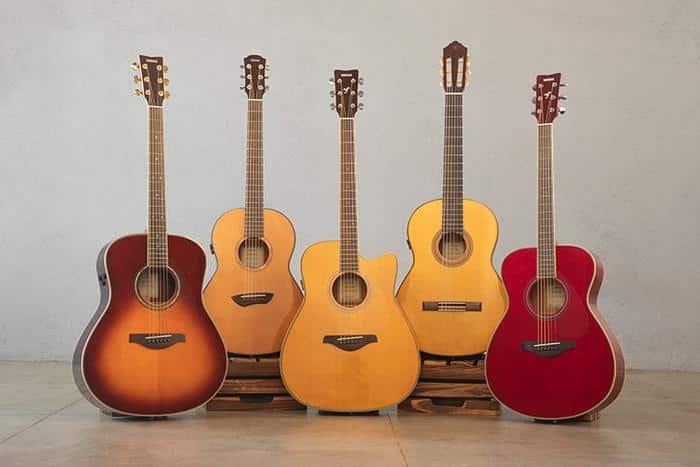
In my many years of experience as a music critic and guitarist, I’ve always found the sound quality to be a critical aspect of any guitar. It’s a primary element that contributes significantly to the overall playing experience. The guitar sound quality can make all the difference between a typical strum and a compelling melody that breathes life into a piece of music. It’s the soul of the instrument.
What if I told you that Yamaha TransAcoustic guitars deliver not just superior sound quality, but also natural acoustic sounds that can thrill every music lover? Not just claims from an acoustic guitar forum, but a proven fact attested by many musicians. The moment I played my first chord on a Yamaha TransAcoustic guitar, I knew it was different. The sound was resonant, clear, and astonishingly natural.
Often, numerous elements bear on the guitar’s tone and timbre—the kind of wood, the craftsmanship, the strings. Yet, Yamaha TransAcoustic goes beyond these basics, creating instruments that offer a truly natural guitar sound, almost like an orchestra within an instrument. Plucking a string on these guitars doesn’t just create a single note but unfolds a symphony of rich harmonics. The resonance is not only heard but felt, creating a harmonious connection between the musician and the instrument.
Yet, one might say – every guitarist cherishes their sound, their tone – so how can one ascertain what a natural guitar sound is? It’s an intriguing question. However, having experienced the joy of playing various guitars and having engaged in countless musician feedback on guitars, I can confidently say that the Yamaha TransAcoustic offers a sound that is pristine, defined, and meticulously balanced. This balance is the key – ensuring that no frequency overpowers another, yet every string, every note, has a distinctive voice. It’s an intricate dance of sound waves generating a symphony that is blissfully natural.
Of course, sound quality isn’t only about the pure acoustic sound. Yamaha’s innovation doesn’t stop there. The onboard effects and capabilities of these guitars transform them into literal sound studios, yielding unparalleled versatility in tuning and sound shaping. But that’s a melody for another stanza.
For now, let’s rejoice in the fact that Yamaha TransAcoustic has elevated the guitar playing experience with their exceptional sound quality. They have made it possible for every musician, from a beginner to a seasoned professional, to harness the power of a natural guitar sound, adding an extra dimension to their musical journey.
How to Purchase the Right Yamaha TransAcoustic Guitar
Shopping Tips and Advice
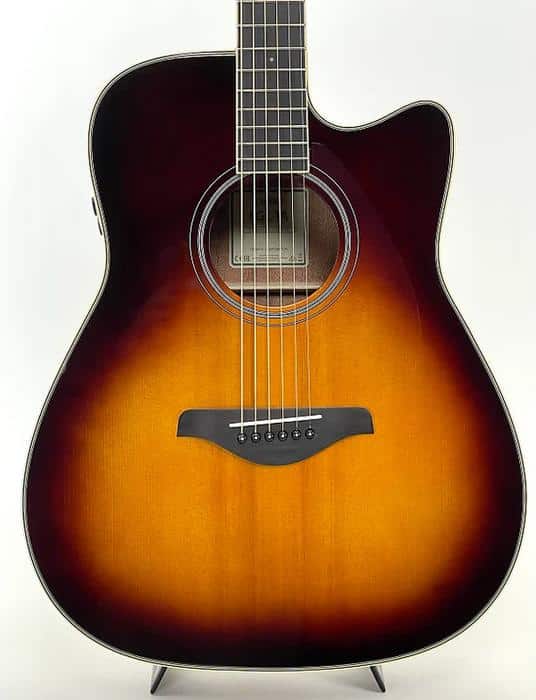
Having journeyed through the guitar buying process myself, I’ve gleaned some crucial insights I believe will streamline your Yamaha TransAcoustic guitar purchase. The benefit, in the context of our discussion, is avoiding the trial and error I initially endured. Let’s explore some guitar purchase advice.
Firstly, leverage the guitar product listing pertaining to Yamaha TransAcoustic guitars. It’s an essential touchpoint for evaluating models and their specific features. Notably, the Yamaha FG-TA or LL-TA, each boasting unique traits that may speak to your personal playing style. Don’t simply seek the most expensive or popular model; instead, consider the model that matches your genre and skill level. Also, think about the onboard effects and capabilities of various models, such as the integrated reverb and chorus effects.
Secondly, always scrutinize the guitar’s sound quality before your purchase. Remember, the TransAcoustic technology aims to deliver a more immersive, resonant sound. Therefore, ensure the instrument lives up to this promise. As we move into a more detailed comparison, the importance of these shopping tips and advice will become clearer.
These considerations have drastically shaped my guitar buying experiences, and I trust they will direct you towards the Yamaha TransAcoustic guitar that suits you best.
Comparing Yamaha TransAcoustic Guitars
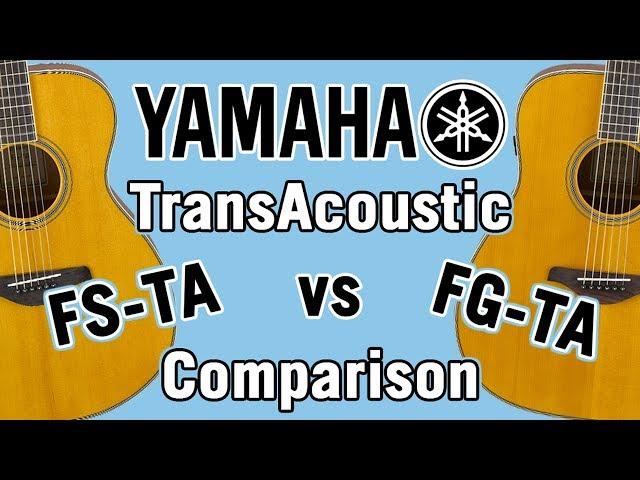
Having explored the features and technology of Yamaha TransAcoustic guitars, it’s essential to compare the models to choose the right one. The process of acoustic guitar comparison requires an in-depth understanding of the subtleties involving tonewood, tuning stability, resonance, and size of each guitar.
In the realm of Yamaha TransAcoustic guitars, the FG-TA and LL-TA models stand out, each offering unique benefits. The FG-TA caters to players seeking rich overtones and improved sustain while the LL-TA is ideal for those wanting a warmer, fuller tone. This comparison is crucial to ensure the guitar matches your playing style and expectations. Understanding these differences, I can guide you to make a well-informed decision.
But remember, a guitar’s feel and sound are subjective. Hence, I emphasize experiencing the guitar live and personal, beyond the analysis I provide. The real magic happens when you play it.
In the subsequent section, I’ll share some shopping tips and advice, putting my years of guitar expertise to good use. This advice will be specifically designed to help you navigate the exciting world of Yamaha’s TransAcoustic guitars as succinctly as possible, without compromising on the crucial details.
FAQs
What are Yamaha TransAcoustic guitars?
What technology does Yamaha TransAcoustic use to create its unique sound?
What are some features of Yamaha TransAcoustic guitars?
Conclusion
Through my exploration of Yamaha TransAcoustic guitars, my appreciation has deepened for the technology and features contributing to their exquisite sounds. Their richness, embodied by natural guitar sound, and transformative effects like the guitar reverb effect and guitar chorus effect, truly sets them apart.
This exploration has firmly cemented in my mind the value of Yamaha TransAcoustic guitars in any musician’s toolkit. The TransAcoustic technology goes beyond amplifying your sound; it enhances each strum, elevating your music to new dimensions otherwise unreachable. This is a real game-changer for performers and hobbyists alike, an advantage that can’t be overstated.
The stand-out truth is: a guitar is about more than simply its physical properties; it’s about the sounds it can inspire, and the emotions it can evoke. As a tool of expression, a Yamaha TransAcoustic guitar provides the means to integrate a broader spectrum of nuance and texture into your music.
For those who crave authenticity and quality, you can experience these with a Yamaha TransAcoustic guitar. Its on-board effects and capabilities are thoughtfully designed to enrich every strum and the chorus options bring depth and color to your performances.
Remember, the transcendent beauty of guitar music isn’t solely a product of excellent craftsmanship, but also the result of your passion, practice, and the right instrument at your disposal. The Yamaha TransAcoustic guitar, a marvel of craftsmanship and technology, is an instrument of choice, capable of unlocking your untapped musical potential.
Thank you for joining me on this journey as we dived into the Yamaha TransAcoustic guitar’s remarkable features and technology. I hope the information shared helps guide your decisions and fuels your passion for making beautiful music.
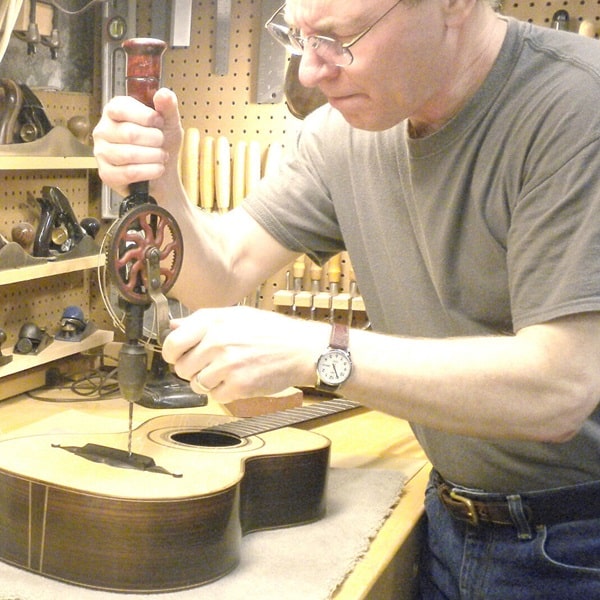
R.M. Mottola, an engineer-turned-luthier, revolutionizes stringed instrument design with his deep focus on acoustics and ergonomics since 1994. As editor of the Savart Journal and a key contributor to American Lutherie, Mottola merges science with artistry in lutherie. He enriches the field with his extensive knowledge, shared through his Liutaio Mottola website, making him a beacon in the world of modern instrument craftsmanship.
